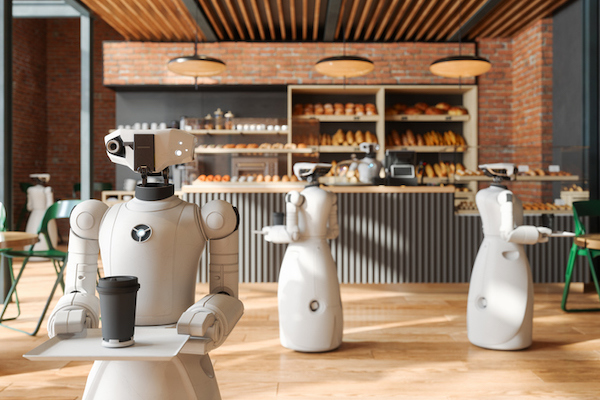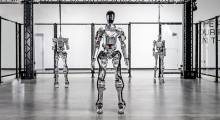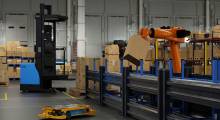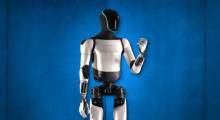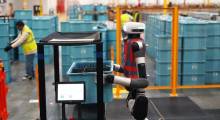Humanoid robots are being developed for a variety of applications, including personal assistance, entertainment, education, and healthcare. They are equipped with sensors, cameras, and other advanced technologies that allow them to interact with the environment and adapt to changes in their surroundings.
The market for humanoid robots could grow from $1.6 billion (U.S.) in 2022 to $214.4 billion by 2032 at a compound annual growth rate (CAGR) of 63.2%, according to a report published by The Brainy Insights. It said the Asia-Pacific region has emerged as the largest market for such robots, with a 35.8% share of the market revenue in 2022.
Asia-Pacific currently dominates the humanoid robot market because of massive demand in India, China, and Japan, said the report. Likewise, the senior population is growing quickly in countries like Japan and China, which could strengthen the market exponentially.
The existence of several key players in these countries will also boost the growth of the humanoid robot market, predicted The Brainy Insights. Also, the European market could grow extensively in response to similar market needs.
AI, technical advances enable humanoids
Technical advances in artificial intelligence will also drive growth in the projections for 2023 to 2032. In addition, the report examines the following:
- Humanoid robot market size by component (software, hardware, and services)
- Application (search and rescue, education and entertainment, personal assistance and caregiving, public relations, research and space exploration, and others)
- Motion type (wheel drive and biped channel)
- Regions, global industry analysis
- Market share, trends, and forecast for 2023 to 2032
Leading robot providers
Noteworthy companies in the humanoid robotics space include Qihan Technology Co., DST Robot Co., and others, said The Brainy Insights. They are continuously focused on new product developments, venture capital investments, and opportunities to obtain market share.
- WowWee Group's Robosapien X has 67 pre-programmed functions, gestures, and fluid motions and is programmable using the integrated R/C or the RoboRemote app. The robot can be operated independently, with the help of the provided remote control or the new IR dongle, which can be used to control it from a mobile device.
- Ubtech Robotics' most recent iteration of its humanoid robot is Walker X. The bipedal robot has noteworthy AI and physical performance. Walker X uses 2.5D obstacle-avoidance technology, first-person view augmented reality navigation, 3D stereo vision positioning, and the capacity to autonomously navigate many sorts of areas securely and intelligently. The entertainment industry, commercial events, corporate and government showrooms, and technology pavilions already use Walker X.
- Toyota Motor Corp. unveiled its new Welwalk WW-2000 robot in 2019. It was intended to support people undergoing rehabilitation for lower limb paralysis brought on by a stroke or other causes. Toyota has been creating rehabilitation support robots since 2007 and testing them since 2011, and the Welwalk WW-1000 was an older model released in 2017. The company's most recent edition offered features, including a gaming component to encourage and train patients to walk.
- Toshiba Machine Co. has rolled out collaborative SCARA and Chihira humanoid robots to complement its selection of industrial robots. These models were intended to be deployed alongside human workers, enabling manufacturers to take advantage of a mix of automated and manual procedures.
- SoftBank's humanoid robots Pepper and NAO attracted and served consumers in commercial facilities with voice communication technology. Many educational institutions also embraced them as teaching tools. SoftBank sold those service robots to United Robotics Group last year. Servi and Keenbot are delivery and transportation robots that assist the food and beverage industry by cutting labor costs or improving service quality. Whiz I, Scrubber 50, and RS26 are used in autonomous cleaning applications and to overcome labor shortages.
- Samsung Electronics recently invested 59 billion won ($45.2 million) in Rainbow Robotics, a regional humanoid robotics business, providing a glimpse into the robotics plans of the South Korean tech behemoth. Samsung said it intends to market the EX1 human helper robot in the upcoming months.
- The ROBOTIS MINI is a miniaturized humanoid robot that can be controlled via smartphones, and its frames can be customized with 3D printing technology.
- Robo Garage Co.'s RoBoHoN was designed for the entertainment industry. It has features including face recognition, a built-in camera, a projector, a map display, and voice interaction. RoBoHoN is about 19 cm (7.4 in.) tall and weighs 390 grams (13.7 oz.).
- Pal Robotics' TALOS allows for robust sensing and multi-contact motions. This allows for complete torque control of the robot. TALOS is currently employed in Internet of Things (IoT,) rescue, and space exploration applications.
- Kawada Robotics said its NEXTAGE can eliminate the need for mundane, repetitive work. The human workforce can then concentrate on tasks that call for creativity and produce additional value, such as process management and improvement efforts. Factories can use NEXTAGE alongside traditional industrial robots and specialist machinery.
- Instituto Italiano Di Technologia's iRonCub robot is built on top of iCub v2.5 and has four jet engines—two installed on its arms, and the other two on a jetpack attached to its back. The jet-powered robot weighs roughly 45 kg (99.2 lb.). The exhaust temperature of the turbines exceeds 600 degrees, and they can produce a maximum thrust force of over 750N.
- After its initial release in 2000, Honda Motor Co. worked on ASIMO to lead to machines that would live alongside people and serve their needs. The most recent iteration of the bipedal humanoid was more autonomous and could function continuously without human control. ASIMO's multi-fingered hand used object-recognition technology based on tactile and visual senses to to carry out tasks like picking up a glass bottle and twisting off the cap or holding a soft paper cup to pour liquid without squashing it.
- Sophia, the human-like robot from Hanson Robotics, personifies the potential of AI. Sophia resembles a science fiction creation and shows the future of AI and robotics. It is also platform for cutting-edge robotics and AI research. Sophia is the world's first “robot citizen,” as well as the UNDP's first robot Innovation Ambassador.
- Engineered Arts' Ameca is one of the most advanced humanoids in the global market, noted The Brainy Insights. Industry experts consider Ameca a model for human-robot interaction because it was created primarily as a platform for developing future robotics technologies.
Components, applications, and challenges for humanoids
The Brainy Insights report divided the component segment into software, hardware, and services. The hardware segment dominated the market, with a market share of around 39% in 2022, it said.
The report segmented humanoid applications into search and rescue, education and entertainment, personal assistance and caregiving, public relations, research and space exploration, and others. Personal assistance and caregiving applications had a market share of around 20% in 2022.
The Brainy Insights defined the motion control portion of humanoid robots into is divided into wheel drive, and biped channel. The wheel drive segment held a market share of around 58% in 2022, found the report.
Government lockdowns in response to the novel coronavirus have affected all industries and supply chains in the past few years. While consumer demand shifted, shortages of raw materials and components—not to mention labor—affected the development and production of humanoid robots, noted The Brainy Insights.
During this period, market players have had to sustain their businesses by finding secure ways to resume manufacturing and sustain revenue.
Still, the healthcare industry is another sector where demand for humanoid robots will increase, said The Brainy Insights. Hospitals could use them to provide security, produce and dispense pharmaceuticals, and bring medicines and food to infected patients.

About the author
Avinash Dhanwani is a research director at Brainy Insights Pvt. Ltd. who monitors and engaging with latest innovations and market development in the information technology industry.
Article topics
Email Sign Up

